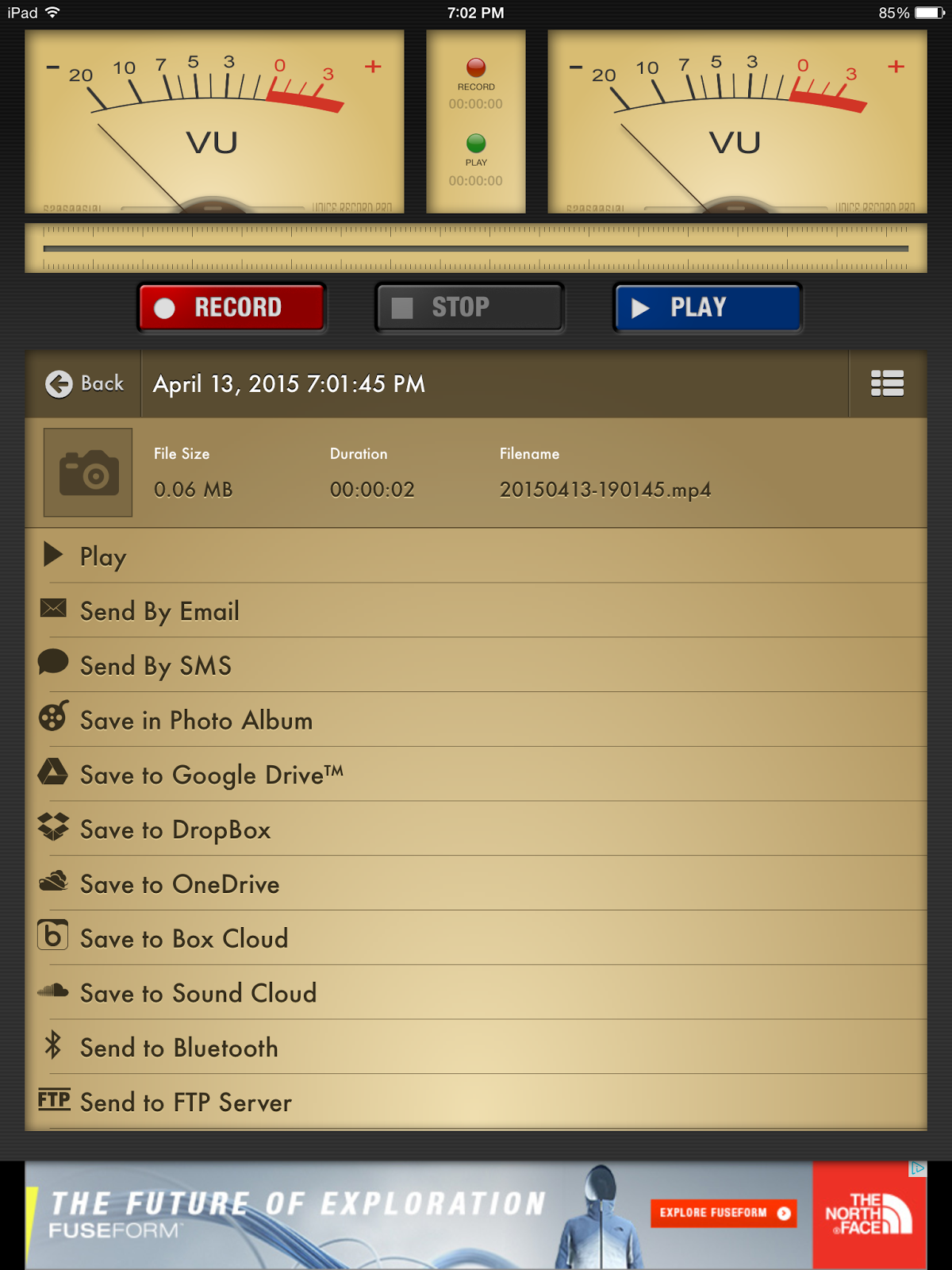To start students wrote a script on Google Docs which they would later record to tell their story. One of the things I was most excited about when using WeVideo was that the kids could do their voiceover directly on the program. When I did some examples, there were no problems. However, for whatever reason, sometimes when the kids tried to record their voices seemed quiet (could have been our microphones...not sure). Anyway, rather than fight this technical glitch, we decided to use Voice Record Pro which is an app on the iPad. This app allowed students to quickly record and save their recording to a file on Google Drive which was then easily uploaded into WeVideo.
Students uploaded all the components necessary for their videos into a folder on Google Drive. They then uploaded pictures and music. From there they were able to upload the contents into WeVideo. The students switched to timeline mode in WeVideo so they could easily change the length of pictures. To add everything to the video, it is just a matter of drag and drop. It is easy to alter volume on the recordings and to edit pictures/video. When I next use this program, I am hoping to get the kids to further explore all the options for editing and animation.
Prior to publishing, be sure you and the students are happy with the production by having students self-evaluate, peer evaluate and then do a quick look yourself. With the free account, you are limited to publishing 5 minutes per month which works fine for the projects I do, but it may not work if you were doing multiple projects (a couple of my students got closer to 10 minutes so it may depend on settings). It also means students can't publish over and over (which is probably a good thing as they will need to be careful when they do their editing). It is possible to get more minutes by paying and there is also an education account which I haven't looked into that much. I know the education accounts allow for collaboration, much the way Google docs, etc. does.
Projects such as this allow for assessment in multiple subject areas. For this particular project, I was able to assess SS outcomes related to the Iroquois Confederacy, democracy and historical thinking. For LA, we were able to hit a number of writing and communication outcomes.
***There is now a small watermark on the upper right hand corner of videos using the free accounts. It will depend whether this kind of thing bothers you whether you will want to use the program as is or upgrade it by paying.
On an aside, digital storytelling, regardless of the format/program, often will give a voice to kids who don't like to speak in class. It always impresses me to hear the tone and expression in students who will often do everything not to be heard in the classroom!

.png)
No comments:
Post a Comment